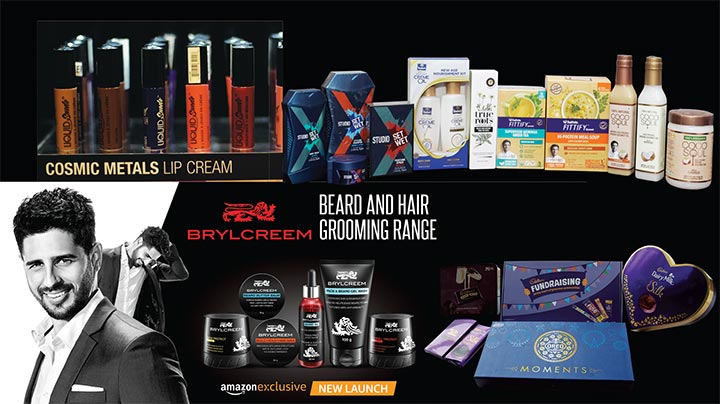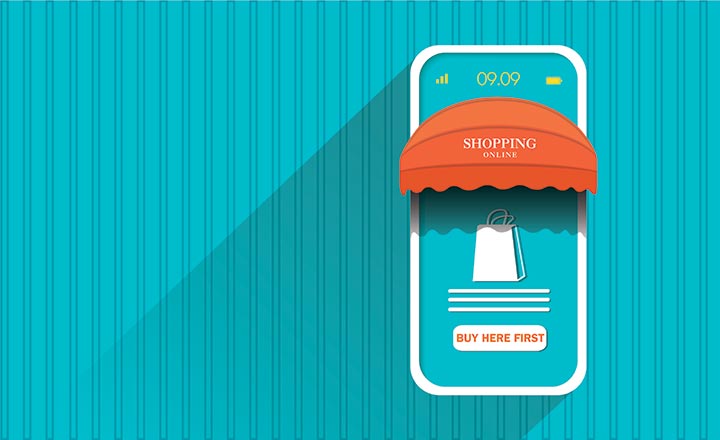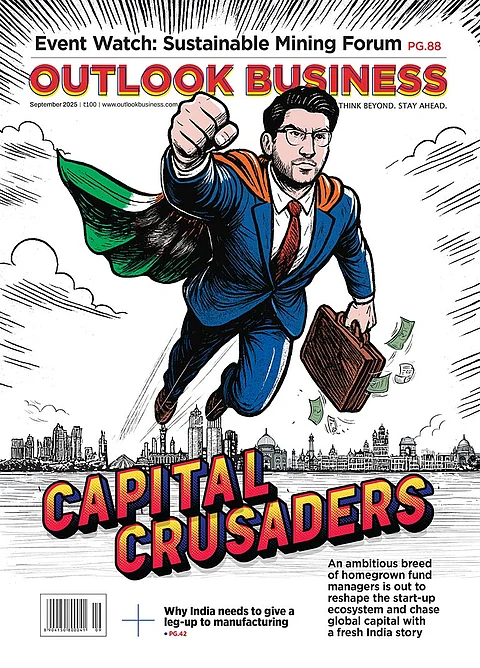Koshy George sprays the hair tonic on your palm and patiently waits for a reaction. It smells good and has none of the characteristics you associate hair oil (of the plastered down 80s hairdos) with. It’s not sticky and rests easily on your hand. This is True Roots, one of Marico’s recent launches, that promises to delay greying from the roots.
In the making for a few years now, the brand first went online last October. A few months later, in January, it made its way to retail stores. This is not Marico’s only online-first brand — starting the first quarter of this fiscal, the fast-moving consumer goods (FMCG) major has launched seven such brands.
Of the seven, two — True Roots and Coco Soul Virgin Coconut Oil (cold pressed oil for cooking) — are new product categories for the company; the rest are a combination of brand extensions such as Saffola Fittify range of green tea and coffee, slim shakes and variants of existing brands such as Set Wet Studio X male grooming range and Parachute Advansed Hair Oil. George, Marico’s chief marketing officer, says that each of the new brands is the result of identifying a trend in the market. For example, True Roots and Coco Soul Virgin Coconut Oil are premium products — Rs.500 for 150 ml of the hair product and Rs.350 for 250 ml of the cooking oil — for a select group of people.
Online is a medium that excites the Rs.64-billion Marico, though only 3% of its revenue comes from e-commerce, which is broadly the same for most large Indian FMCG companies. This channel gives them consumer insights in real time and an opportunity to make course corrections. Advertising can be cheaper, with just digital and making the right quantum of noise on social media. In the difficult FMCG industry, where the brand success rate is about 7-8%, ‘online-first’ could be a winning card.
Changing times
To understand this strategy, it is worthwhile to go back in time. In most instances, companies launched new brands taking the test marketing route. A particular part of India would be chosen for this exercise, with the south often being the preferred choice. Here the consumer base was considered to be both knowledgeable and discerning, and media costs were substantially low, since it was possible to test just one state offering in an unique language.
This exercise reduced the chances of failure but there were limitations. The chosen market, while a good test ground, was rarely a reflection of the rest of India. Scaling up, therefore, was always going to be expensive. In that scenario, online presents itself as a viable option.
As it is across the world, it is electronics and books that first took off on e-tail. FMCG, especially food, were among the last to hop on. Convincing consumers about the freshness of products and weaning them off the need to touch and feel the buy were hurdles that had to be crossed.
But over the past few years, going online-first has caught on with the FMCG majors. Each of them uses this strategy differently. Identifying what is trending is a key recipe for success here and the idea could emanate from a small insight. For Hindustan Unilever (HUL), the largest in the FMCG business, that nugget came from Amazon. According to Dheeraj Arora, vice-president, modern trade & e-commerce, HUL, the feedback was that male grooming as a category was witnessing high levels of demand, especially in specialised sub-segments such as beard grooming and hair. “That kind of an insight at a niche level can come only through a data-driven approach,” he says. By July 2018, HUL launched a new range including beard oil, beard wash, beard balm, hair wax, and a face-and-beard wash under the Brylcreem brand. The male grooming category earns HUL Rs.3.5 to Rs.4 billion, and today, the new Brylcreem brand extensions see 500 orders a day on Amazon, according to industry trackers.
While this was the first time HUL launched a product based on insight gathered online, the company adopted online-first two years ago with its Lakme Lever products such as Lakme lip crayons and Lakme Absolute Argan Oil collection. In FY18, 10% of the vertical’s revenue of Rs.2.5 billion came from e-commerce sales. Online channel helps them with specialised targeting such as reaching women under 30.
George points out that Generation Z, those born between the mid-1990s and early 2000s, show more openness to try new brands as opposed to a mindset from the past, where trust and salience were critical. “The emergence of an open-minded, affluent consumer and e-commerce together means more launches at the top end of the market, compared to most of it earlier catering to the middle and bottom,” he adds.
Testing times
When it is a critical launch, or relaunch, in this case, an online debut helps create a buzz. When Nestlé’s Maggi, the undisputed leader in the noodles market, returned to the market in November 2015, after a quality-related issue kept it out for five months, it chose to first launch the brand on Snapdeal. After being there for two weeks with a presence in a few stores, it was expanded into more stores in phases. According to Ravi Ramchandran, the company’s head of sales, “We were aware of the pent-up demand for Maggi and decided to create a build-up before it was available in the stores.” That decision worked out well with 60,000 packs being sold within minutes after its re-launch on Snapdeal and over 700,000 in a month. Similarly, when the Milkmaid ice-cream kit was launched in 2016, 10,000 units got sold in 10 hours.
Online-first strategy also helps you reach untapped corners. Last year, when breakfast cereal NesPlus was drum-rolled in, Nestle saw orders coming from 26 states. The company also saw demand for coffee-maker Nescafé É, a product priced at Rs.6,500, from smaller centres such as Shimla, Raipur and Kolhapur. On an average, they have been selling 55 units of this smart-app enabled device per month online. Selling this offline through electronics chains straightaway would have been a difficult proposition.
Demand for L’Oréal’s premium offering NYX (with a price tag starting at Rs.600) was expected to come from the top eight to 10 cities, and that’s how it played out in the first year. But then, the following year, there was offtake from Bareilly in Uttar Pradesh. “There was no way I could reach out to the consumer there through the offline route,” says Aseem Kaushik, L’Oréal India’s director for consumer products division. NYX, a Rs.100-Rs.120 million brand in India that L’Oréal acquired globally in 2014 for $500 million, was launched in India in 2016 on online beauty store Nykaa. To this day, it continues to sell only online. Word began to spread as users began to post videos on the product experience – this is now referred to as the three Vs — voice, video and vernacular.

This medium is “very malleable,” says Gunjan Shah, Britannia Industries’ vice-president (sales), which allows them to come up with innovative ways to sell. One such offer entailed giving out a pack of Marie Gold free with a dozen bananas, which was a 15-day offer on BigBasket.
It is expensive for brands to sell in the ‘real world’. At the outset is a listing fee, the money paid by a brand to the store owner just to be sold at that outlet. Depending on the retail chain, a listing fee of about Rs.4,000 to Rs.8,000 per stock keeping unit (SKU) per store, is charged as a one-time, non-refundable payment. Then, there is the margin, terms of trade as it is often called, to be paid to the outlet. For daily essentials such as rice and cooking oil, it would all account for 15% of the MRP, and it could be as high as 35% for frozen food, since it requires refrigeration. Finally, the company will be required to run a promo at the outlet, with the objective of increasing sales.
Most of these issues are less complex when one has to deal online. For one, there is no listing fee and terms of trade are 15-20% of selling price. According to Abhinay Choudhari, co-founder of online grocery store BigBasket, there is a clear advantage of going online first as a brand has to deal with just one retailer as opposed to several stores in the case of offline, where products need to be stored at multiple locations. Nestlé’s Ramchandran says Maggi has one drop point for online, while it is five to six for offline.
“Online, I can store 1,000 units of a product in one city all in one place. Offline could well be 10 units each across 100 stores, making it a very expensive proposition,” says Choudhari. Selling online allowed NYX to stock 500 SKUs, while an offline store would have taken, at best, half that number.
Close encounters
In cyberspace, you can get to know your customer better and tailor make a product. “Sampling for a small audience is also possible in e-commerce,” points out Ramchandran.
In 2014, Britannia, for the first time, chose online-first to launch Good Day Chunkies. It has not followed this strategy for any other product — something the company plans to change in the coming 10 to 12 months. About 2% of the company’s sales comes from online, though Shah says it has doubled (on a small base) over the past three years.
L’Oréal’s Kaushik says that their face mask was a result of tracking searches where consumers were looking for a multani mitti kind of a product. “This is a new category and was launched (last year) after social listening,” he adds.
For more recent launches, such as makeup remover Garnier Micellar and Garnier face masks, they remained online for six months and two months respectively, before making their way to the stores. The company noticed that people were willing to spend but there were only limited options — for example, they had to either use face wash or soap as a make-up remover in the lower end. “The makeup junkie [who uses at least 15 products] is a highly evolved user and is willing to spend,” says Kaushik, adding, “while it may be a limited group, they are spread out and that’s where the challenge is.” L’Oréal launched two variants at Rs.175 and Rs.225, catering to different consumer segments. Kaushik, without revealing the numbers, says demand has been encouraging.
There is many an advantage that comes by just listening or watching, which leads to spotting an unmet need – something marketers will give their right hand for. A case in point is Mondelēz India, which makes approximately 2% of its revenues from online sales. Last July, Abhishek Ahluwalia, e-commerce head at Mondelēz India, noticed that a particular offer for its brand, Bournvita was taking off. It was a discount available on the purchase of two 750 gram units. The company increased its supply and Ahluwalia’s team, along with the marketing department, decided to experiment with a 2-kg pack. Though Ahluwalia declines to share actual numbers, he says, it convinced the company to launch this offer online-first, and follow suit with other products.
For Mondelēz, whose largest business is chocolates, gifting is an important opportunity. One such occasion was Raksha Bandhan, where its Celebrations brand is positioned as a gifting option. 2017 was when it launched the Raksha Bandhan gift pack online, with the rakhi and roli chawal. “Though it did sell, consumer feedback was about the lack of personalisation. Some of them wanted their names on the gift pack,” says Ahluwalia. The company interviewed some of its online customers over a Skype call to probe this a little more. “In 2018, we changed the packaging a little bit and made it personalised, which worked very well.”
Given that Cadbury as a brand has been around for a while, on its 70th year in India, it tried to capitalise on the nostalgia story. Late last year, it launched Dairy Milk bars with packaging across time in a tin box. “It was a limited edition and was appropriate for online,” he says.
Mondelēz has a three-pronged strategy for e-commerce – online first, selling products specifically for online and, finally, launching products offline and online simultaneously. The online stock of products is selected based on price (for example, a Rs.5 Dairy Milk bar will not make sense for a company since distribution costs will make it unviable), possibility of getting shelf space for a new offering (difficult in the case of 2-kg Bournvita since demand is not pan-India and it’s still early days for the product), occasion-specific (where they can charge more for a retro pack for instance) or just testing a product initially online before going offline (they did with Fuse and Dairy Milk variants).
Trouble bubbles
Despite all the benefits, e-commerce contributes only 2-3% of total revenue of most large FMCG companies. According to Samarjeet Singh, CEO and co-founder, Iksula, an e-commerce solutions company, it is not easy today for FMCG companies to increase their proportion of revenue from e-commerce. “The big online grocers such as BigBasket, Grofers and Amazon are still a big city phenomenon and in all, cover no more than 20 cities. However, for HUL, at least 60% of its business comes from Tier 2 and Tier 3 locations,” he says. For their part, companies, too, have been reluctant to push e-commerce on their own site. “Brands of these companies are still a part of a basket. A consumer will never pick up five to 10 products made by the same company, and that will not make the company’s own e-commerce business a viable idea.”
The biggest challenge in online, according to Britannia’s Shah, is managing logistics and ensuring that the product is always adequately stocked. That calls for a supply chain high on precision and geared to meet the online demand.
Despite snags, online allows companies to be innovative at costs that are not prohibitively high. For it to gain scale, it may need a few more big ticket gambles, which could alter the story dramatically.












 Just one email a week
Just one email a week